one of my favorite childhood memories is watching k-dramas with my mom. my dad would bring home dozens of boxed dvd sets from his trips to china — all k-dramas, dubbed over in mandarin (actually how i learned chinese! lol). some made us laugh, others tugged at our heart strings. on multiple occasions, my dad would come from work and find my mom and i in a puddle of tears on the black leather couch of my childhood home, surrounded by used tissues.
mom and i recently started watching the k-drama, when life gives you tangerines. if you’ve seen it mentioned at all on social media, you probably know most people bawl their eyes out. i was nervous about starting the show with mom because real life is emotional enough rn 😅. but we had a few hours on a plane with no tv screens, and this was the only show i had downloaded. thankfully, the one episode we watched wasn’t that bad — we made it through unscathed by tears! funny enough, she also brought up this same core memory of my dad walking in on us mid-cry. it’s nice doing these things with her that remind me of my childhood :’)
i guess this is the point in this newsletter where i should mention that i am writing this from chengdu. mom and i spent a couple of days in seoul as a rest stop, and are now nearing the end of our week in chengdu. i usually like to be pretty open about things, but this cancer cloud has made me hesitant to speak plans out loud — like saying them might jinx it. everything feels so touch-and-go lately that committing to anything too far ahead of time feels risky. but now that we’re here and have made it through week two, it feels safe to talk about what’s already happened. maybe that’s a weird mentality? idk
this was my third time in seoul, and by far my favorite. it wasn’t very high on mom’s travel list, mostly an opportunity to rest for a couple of days, adjust to timezones, before carrying on to other destinations. but, mom ended up loving it! — she’s already asked if we can come back and even suggested that we extend our stay hehe.
i feel like some cities are great as a quick-hit, to sightsee and visit a few landmarks. other cities are better lived-in, where you just slip into your daily life and exist. for me, seoul is the latter. instead of visiting the tourist hot spots, we spent the first couple days in a residential neighborhood near seoul national university, surrounded by college students and young professionals. most of the restaurants we went to were family-owned. we would hop on the bus just to sightsee, riding alongside commuters during rush hour. it was wonderfully chill, and fun experiencing the city in a quieter, more local light.
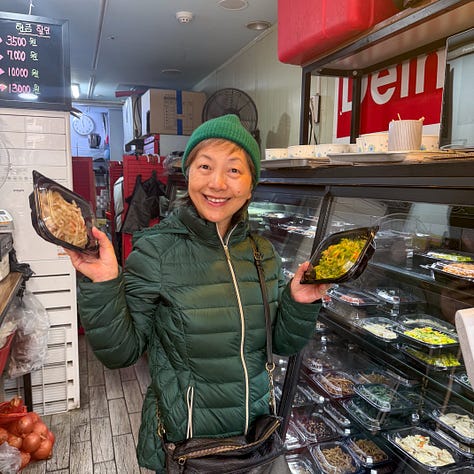
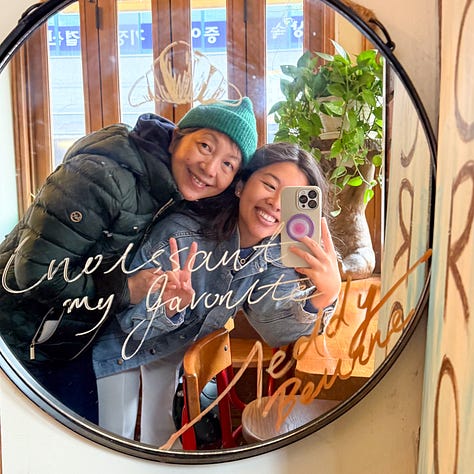
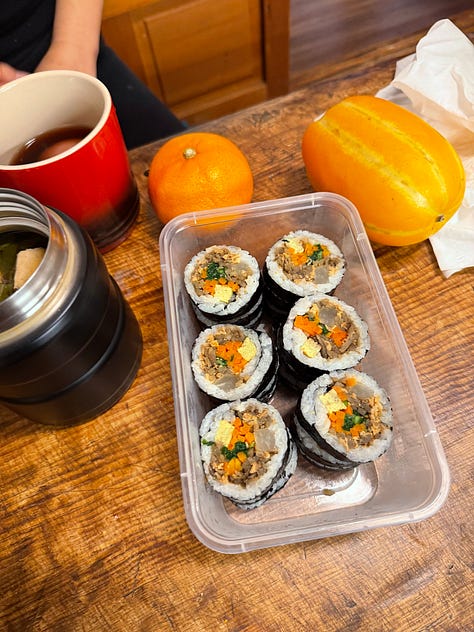
from there, we spent another couple of days staying in a hanok (traditional korean house) inside bukchon hanok village (my favorite spot to visit each time). this was *the one* touristy spot i wanted mom to see, and staying *in* the village made it easy for us to just meander around for little strolls whenever we felt up for it. we visited bakeries in the morning, browsed shops in the afternoon, and took naps before dinner.
i took mom to some of my favorite spots from previous trips and we discovered new favorites. we experienced the most amazing hospitality i have ever experienced from airbnb hosts — they provided us with breakfast foods, snacks. one treated us to starbucks lattes as a thank you, the other dropped off homemade kimbap and doenjang jigae 🥺 it was incredibly heartwarming.
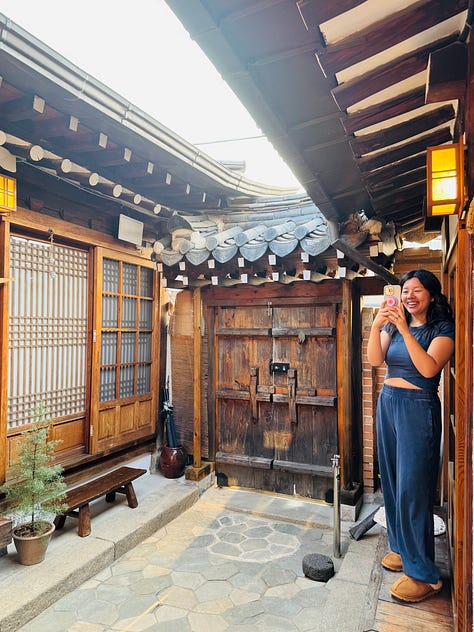
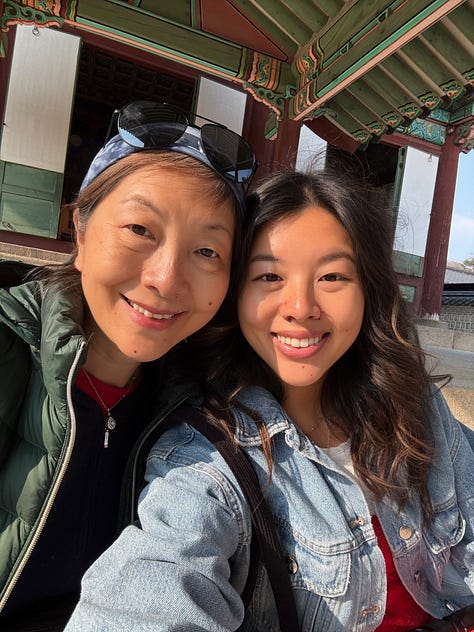
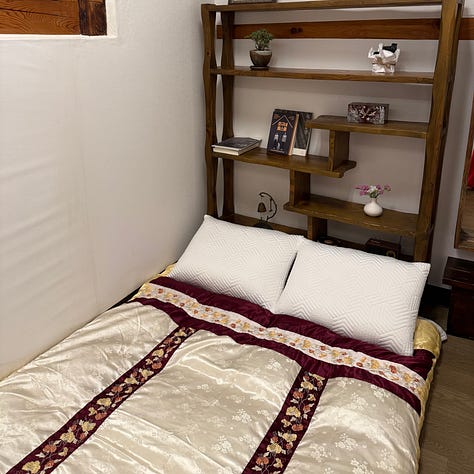
going from korea to china (or the reverse) is always a bit of a culture shock. on the one hand, things are much cheaper in china — our 2 bedroom “airbnb” is only $55/night, meals are affordable, and the street food is plentiful. on the other hand, seoul has this quiet orderliness to its culture — people wait single-file to get on the bus, and restaurant-goers always leave their tables nice and tidy. where seoul’s restaurants are hushed and polite, chengdu’s are boisterous.
doubanjiang: sichuan’s essential fermented bean paste
one of my favorite things we’ve done in chengdu (along with seeing pandas irl!!) is visiting the sichuan cuisine museum, also known as the chuancais museum. this might be the only museum where your admission ticket includes sampling 20+ different foods. there was a buffet of sichuanese classics from chaoshou (wontons) to liangfen (mung bean jelly) and fenzhenrou (braised pork with toasted rice powder). quite genius — what better way to expose people to sichuanese cuisine then to let them try it?
the museum is located about 45 minutes out of of the city center, in what is now known as the pidu district. prior to 2016, this area was actually called pixian, as in “pixian doubanjiang”, and is credited for being the birthplace of doubanjiang.
i personally love learning about food, its origins, and how ingredients are made, so i thought i’d share a few things i learned (with a little help from other sources!). it’s been a dream of mine to spend a couple of months in china diving deep into regional cuisines, and this visit felt like a small but meaningful step toward that dream.
what is doubanjiang?
it’s a fermented chili bean paste made from broad beans (fava beans), erjingtiao chili peppers, salt, and wheat flour. it has a deep, savory, umami flavor with a spicy kick, and is at the heart of sichuanese cooking. similar to other fermented bean products like miso or doenjang, it also has a slight funk to it. this paste is essential to many popular sichuanese dishes like mapo tofu, dan dan noodles, shui zhu yu / spicy boiled fish.
over time, doubanjiang evolves in both texture and flavor. you’ll often see it labeled by age, most commonly 1-year, 3-year, or 5-year varieties. like wine, the longer it's aged, the deeper the flavor and the more $$ it is.
traditional pixian doubanjiang is a bit different from the tobandjan you’ll find in supermarkets from brands like lee kum kee. tobandjan, used more so in cantonese and japanese cooking, tends to be milder, sweeter, brighter, and often times also includes garlic.
origin story
as with many things, there’s different variations to its origin story. this version dates back to the mid 1600s — legend has it that Chen Yixian was moving from fujian to sichuan and brought with him broad beans to eat along his journey. however, his journey was hit with rainy weather which caused the beans to spoil. he didn’t want to throw them away, so he tossed it with fresh chili peppers and salt in an attempt to preserve them (lol frugal man!!), which led to the early versions of doubanjiang.
decades later, in 1688, the Chen family established a business in Pixian producing doubanjiang, soy sauce, vinegar, and other brewed and fermented products. doubanjiang popularity grew in the region, with other producers in pixian also refining and perfecting this technique.
fun fact: chili peppers were first introduced to china in the late 16th century by the portuguese and dutch! idk why i thought they would have been around for longer than that
the making of doubanjiang
the traditional way of making of doubanjiang is not a short process — the fermentation alone takes at least one year, though can go for up to 3-5 years.
step 1, prepping broad beans: broad beans are harvested and sun-dried, then soaked and steamed until soft
step 2, fermenting the beans: remember when i talked about how it rained on Chen’s journey to sichuan, and the beans started to go moldy? this is the next step of the process. the beans are intentionally allowed to develop a light koji-like mold. this mold begins breaking down the starches and proteins in the beans.
step 3, mixing in chilis: once the beans have been allowed to mold (which takes 1-2 months), they’re mixed with chilis and salt.
step 4, open-air fermentation: this part takes the longest! at this point, the mixture is moved to a large clay crock that allows for natural fermentation. this process is tied with the cycles of nature and goes through three steps:
flipping: the paste is stirred regularly to ensure even fermentation and to introduce oxygen, which helps deepen its flavor
sun-burning: crocks are left out in the sun during the day to intensify the paste, helping concentrate its flavor and color
dewing: at night, crocks are uncovered, allowing it to absorb the morning dew. this slightly rehydrates the paste, helping it regulate its moisture levels.
some say that true doubanjiang can only be made in pixian because of its unique climate and microbial environment.
1 vs 3 vs 5-year doubanjiang
over time, doubanjiang becomes deeper in flavor, darker in color, and yield a more complex aroma. most of what you find in grocery stores is the 1-year variety. though some less traditional varieties use short cuts to accelerate the fermentation process or add in flavor enhancers to mimic the depth of traditional doubanjiang (same is also true for soy sauce, which my loves to rant about lol).
1-year: bright, spicy, and salty, used for stir-fries and dishes like mapo tofu, twice-cooked pork, dan dan noodles
3-year: richer and more balanced. not as punchy and used more in stews and braises like sichuanese-style hong shao rou (braised pork belly) or sichuan-style braised fish.
5-year: deeply fermented, almost funky. sometimes this will get mixed with a younger doubanjiang to add richness without being too funky.
if you’ve ever been to one of my supper clubs, you might remember that i mix traditional pixian doubanjiang with hk-style tobandjan for my mapo tofu. i’m looking forward to experimenting with different ages of doubanjiang for future dishes, and overall just excited to bring back what i’ve learned and incorporate them into supper clubs, whenever i can do those again.
would also love to know if you find deep-dives like this one interesting!
thanks for noodling around with me <33
x christy



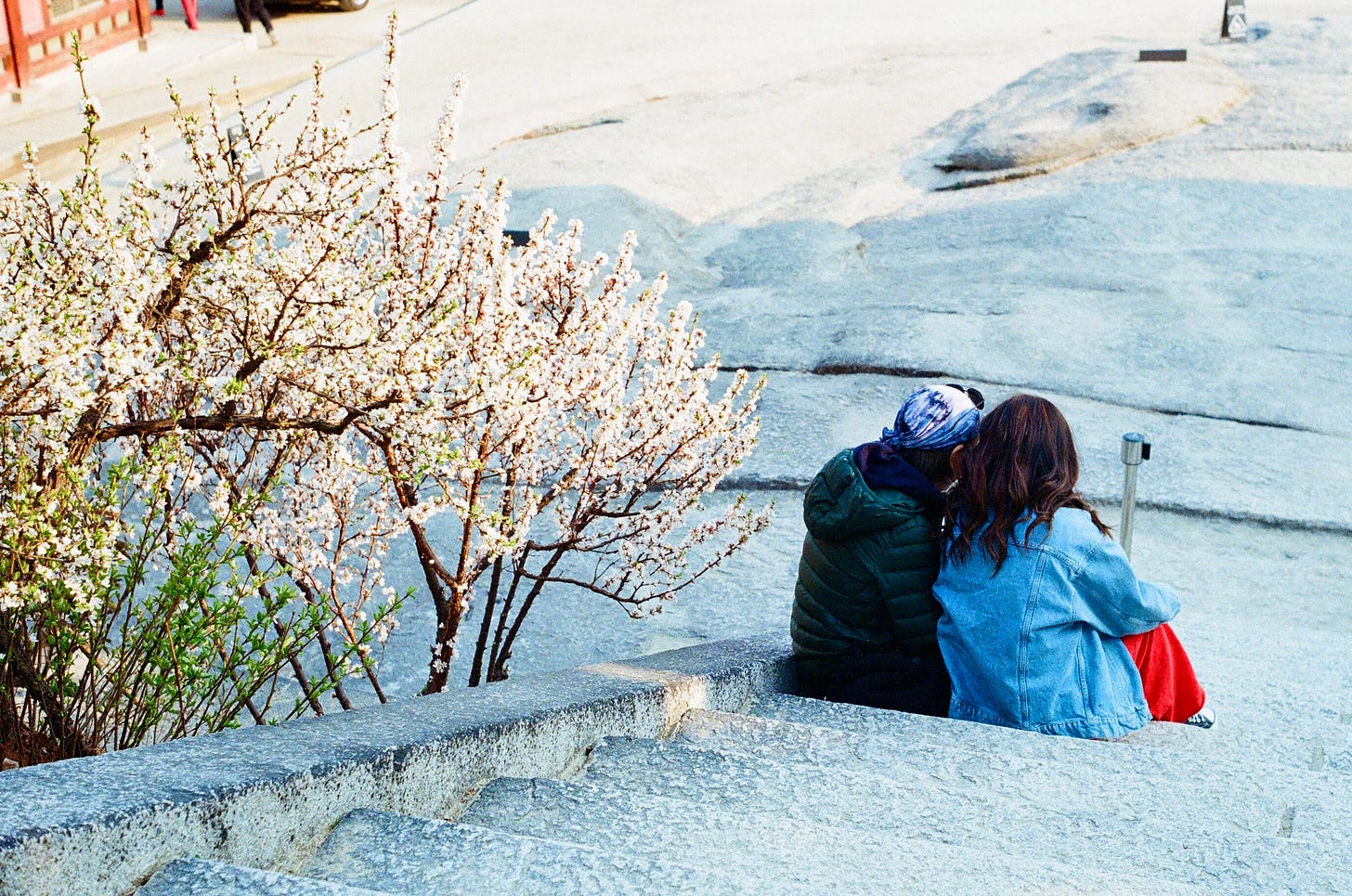
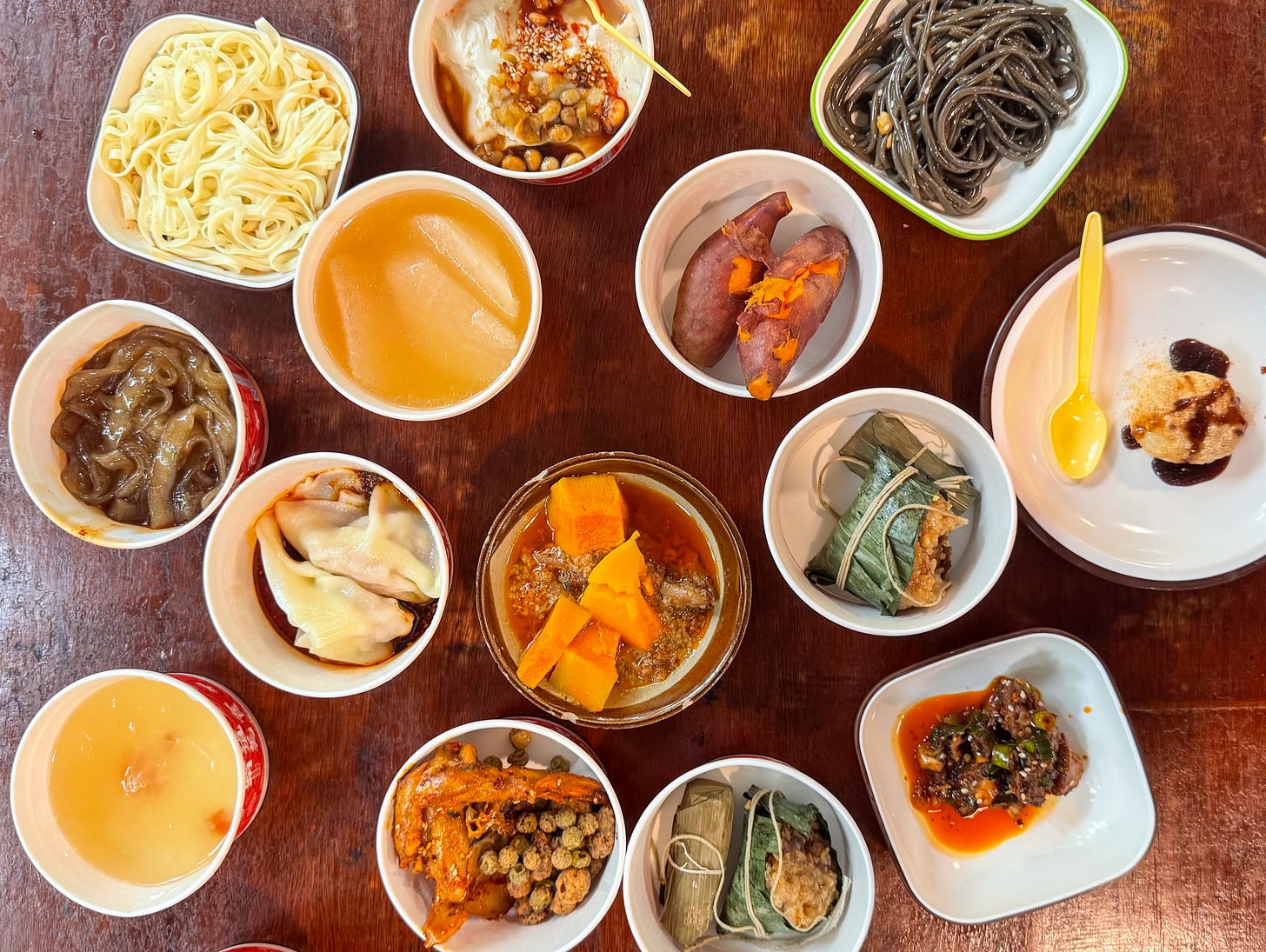
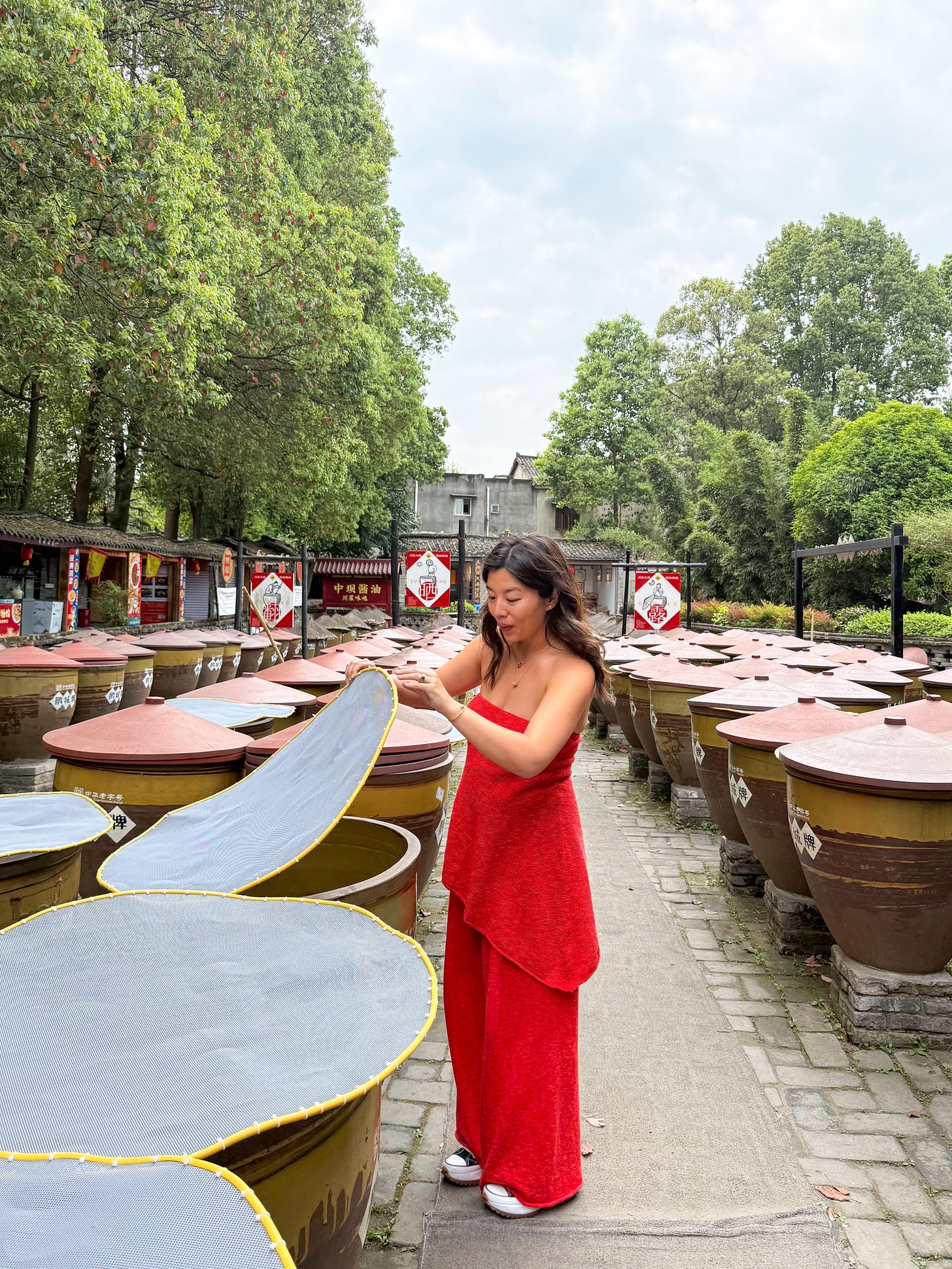
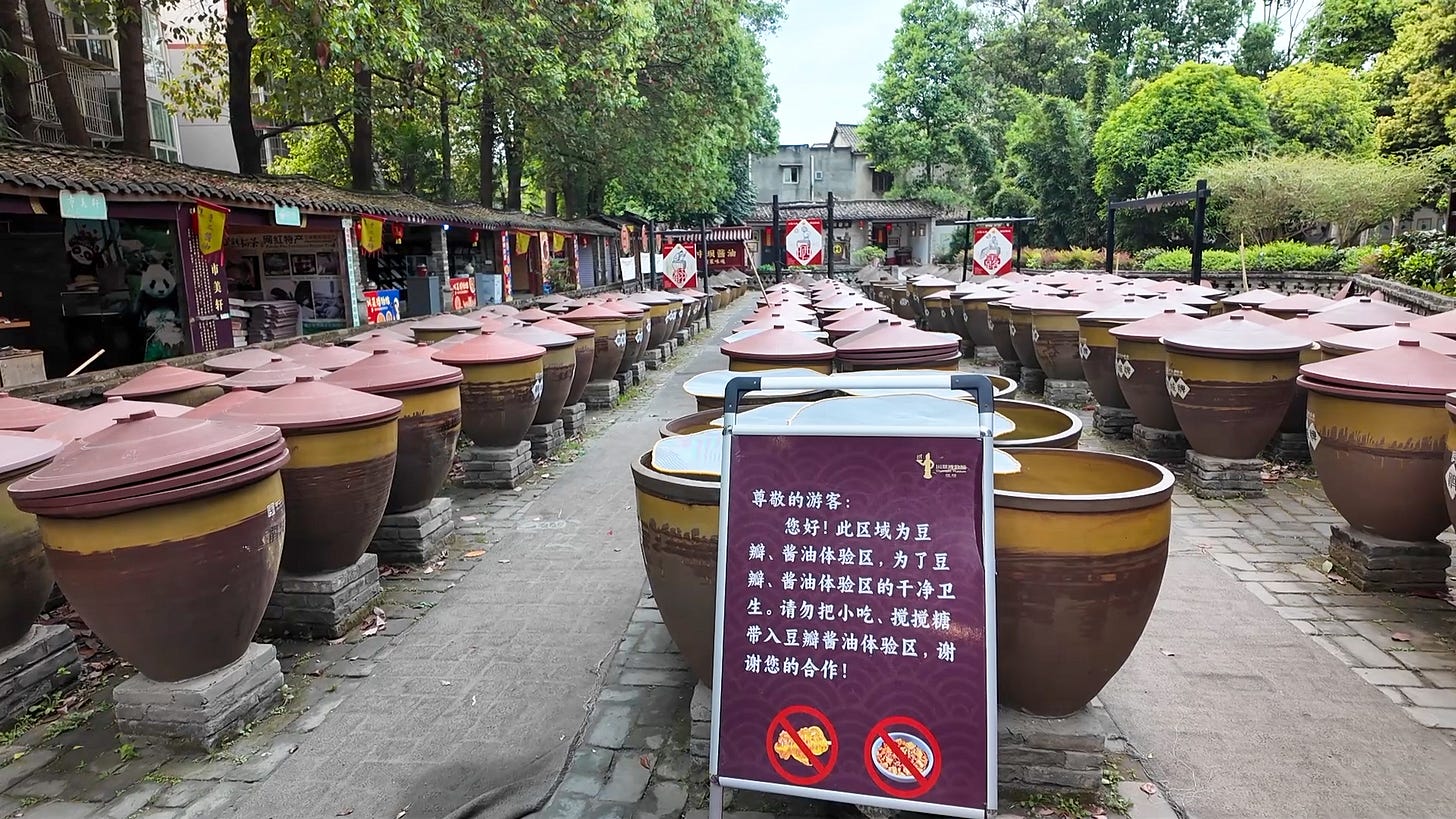
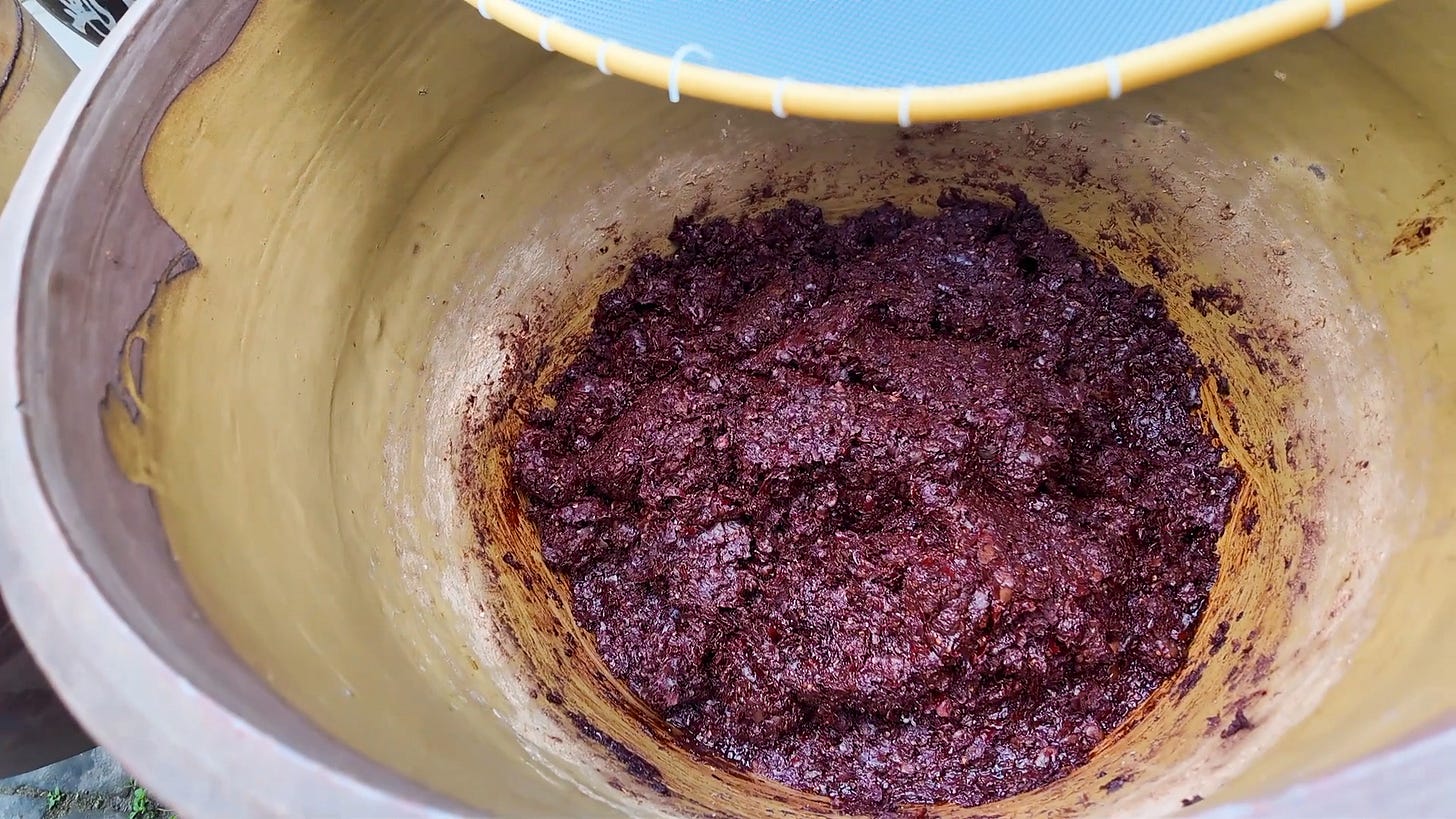
Very cool deep dive! My dad and I visited Chengdu back in 2019 and loved the food and vibrant culture (he went to college there, but it’s definitely unrecognizably different 40 years later!) We saw the pandas, but didn’t realize there was a chuancai museum. Will have to go on our next trip!